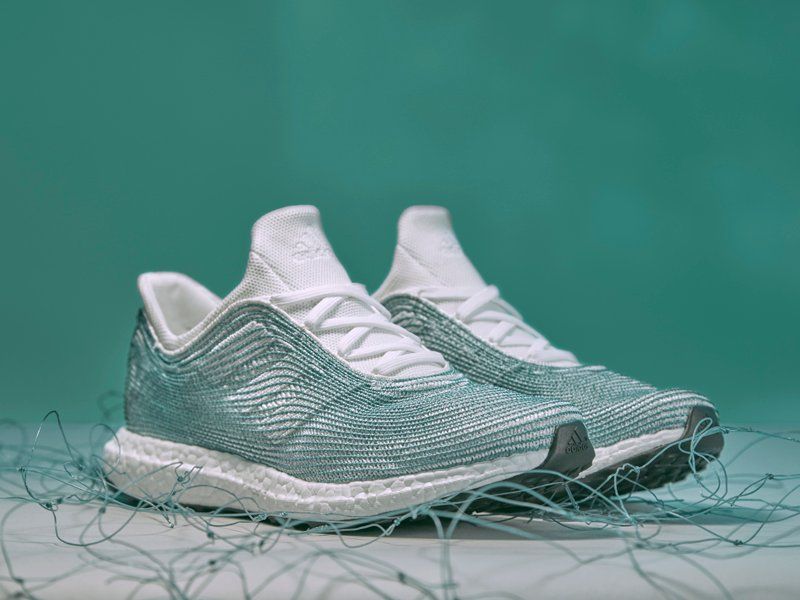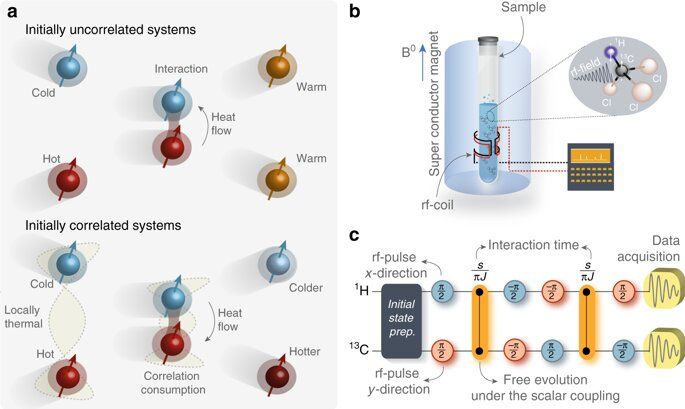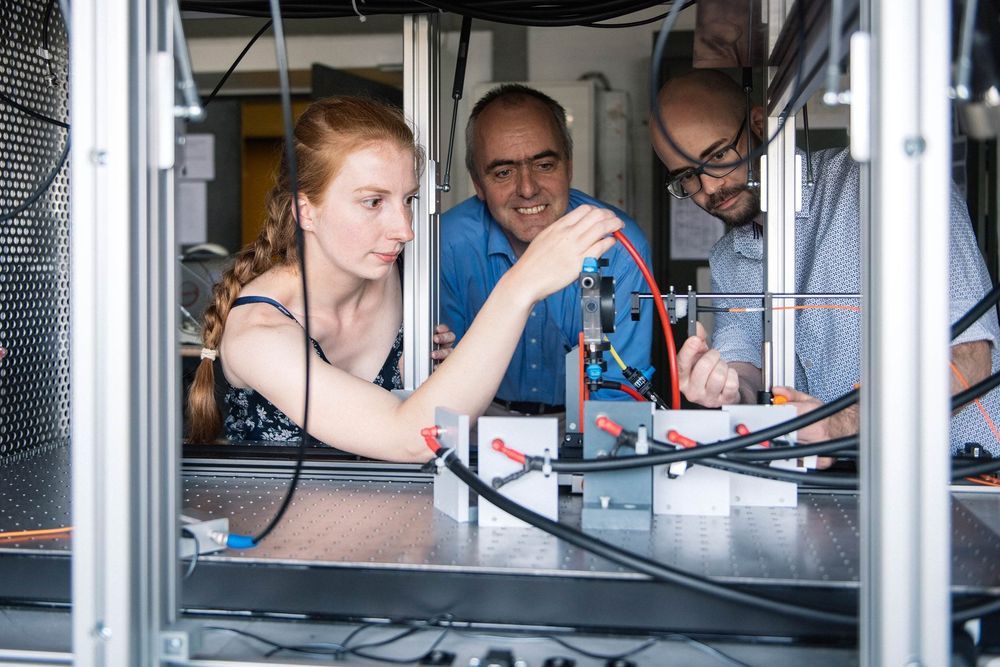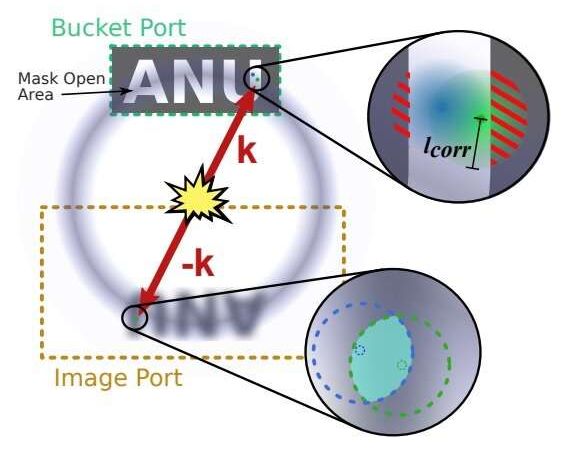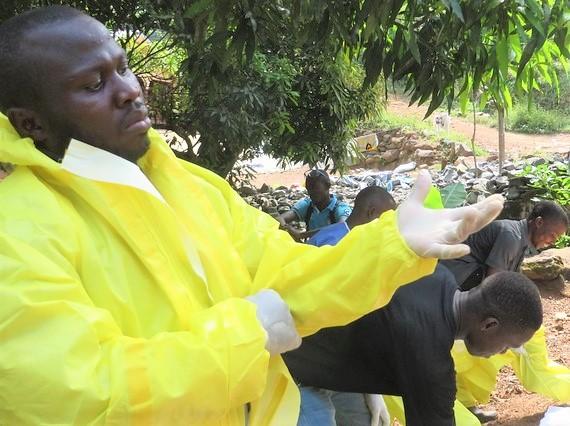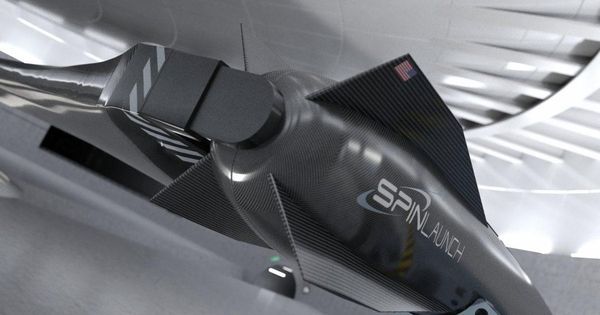Page 8160
Jun 27, 2019
NASA Is Sending a Life-Hunting Drone to Saturn’s Huge Moon Titan
Posted by Genevieve Klien in categories: drones, space
NASA is going to Titan.
The space agency announced today (June 27) that the next mission in its New Frontiers line of medium-cost missions will be Dragonfly, a rotorcraft designed to ply the skies of the huge, hazy and potentially life-hosting Saturn moon.
If all goes according to plan, Dragonfly will launch in 2026 and land on Titan eight years later, NASA officials said. The probe will then spend at least 2.5 years cruising around the 3,200-mile-wide (5,150 kilometers) moon, making two dozen flights that cover a total of about 110 miles (180 km).
Jun 27, 2019
Dragonfly: Flights of Exploration Across Saturn’s Moon Titan
Posted by Quinn Sena in category: space
Jun 27, 2019
Adidas is making 11 million shoes out of recycled ocean plastic
Posted by Quinn Sena in category: materials
Jun 27, 2019
Experiment reverses the direction of heat flow
Posted by Quinn Sena in categories: energy, quantum physics
Heat flows from hot to cold objects. When a hot and a cold body are in thermal contact, they exchange heat energy until they reach thermal equilibrium, with the hot body cooling down and the cold body warming up. This is a natural phenomenon we experience all the time. It is explained by the second law of thermodynamics, which states that the total entropy of an isolated system always tends to increase over time until it reaches a maximum. Entropy is a quantitative measure of the disorder in a system. Isolated systems evolve spontaneously toward increasingly disordered states and lack of differentiation.
An experiment conducted by researchers at the Brazilian Center for Research in Physics (CBPF) and the Federal University of the ABC (UFABC), as well as collaborators at other institutions in Brazil and elsewhere, has shown that quantum correlations affect the way entropy is distributed among parts in thermal contact, reversing the direction of the so-called “thermodynamic arrow of time.”
In other words, heat can flow spontaneously from a cold object to a hot object without the need to invest energy in the process, as is required by a domestic fridge. An article describing the experiment with theoretical considerations has just been published in Nature Communications.
Jun 27, 2019
Lightning bolt underwater
Posted by Quinn Sena in categories: climatology, engineering, physics
Electrochemical cells help recycle CO2. However, the catalytic surfaces get worn down in the process. Researchers at the Collaborative Research Centre 1316 “Transient atmospheric plasmas: from plasmas to liquids to solids” at Ruhr-Universität Bochum (RUB) are exploring how they might be regenerated at the push of a button using extreme plasmas in water. In a first, they deployed optical spectroscopy and modelling to analyse such underwater plasmas in detail, which exist only for a few nanoseconds, and to theoretically describe the conditions during plasma ignition. They published their report in the journal Plasma Sources Science and Technology on 4 June 2019.
Plasmas are ionised gases: they are formed when a gas is energised that then contains free electrons. In nature, plasmas occur inside stars or take the shape of polar lights on Earth. In engineering, plasmas are utilised for example to generate light in fluorescent lamps, or to manufacture new materials in the field of microelectronics. “Typically, plasmas are generated in the gas phase, for example in the air or in noble gases,” explains Katharina Grosse from the Institute for Experimental Physics II at RUB.
Jun 27, 2019
Microscopic glass blowing used to make tiny optical lenses
Posted by Quinn Sena in category: biotech/medical
Inserting air into hot glass to form a bubble has been used to make glass objects since Roman times. In new work, researchers apply these same glass blowing principles on a microscopic scale to make specialized miniature cone-shaped lenses known as axicons.
Axicons are used to shape laser light in a way that is beneficial for optical drilling, imaging and creating optical traps for manipulating particles or cells. These lenses have been known for more than 60 years, but their fabrication, especially when small, is not easy.
“Our technique has the potential of producing robust miniature axicons in glass at a low cost, which could be used in miniaturized imaging systems for biomedical imaging applications, such as optical coherence tomography, or OCT,” said research team member Nicolas Passilly from FEMTO-ST Institute in France.
Jun 27, 2019
Quantum ghost imaging improved by using five-atom correlations
Posted by Quinn Sena in categories: particle physics, quantum physics
In conventional imaging methods, a beam of photons (or other particles) is reflected off the object to be imaged. After the beam travels to a detector, the information gathered there is used to create a photograph or other type of image. In an alternative imaging technique called “ghost imaging,” the process works a little differently: an image is reconstructed from information that is detected from a beam that never actually interacts with the object.
The key to ghost imaging is to use two or more correlated beams of particles. While one beam interacts with the object, the second beam is detected and used to reconstruct the image, even though the second beam never interacts with the object. The only aspect of the first beam that is detected is the arrival time of each photon on a separate detector. But because the two beams are correlated, the image of the object can be fully reconstructed.
While two beams are usually used in ghost imaging, recent research has demonstrated higher-order correlations—that is, correlations among three, four, or five beams. Higher-order ghost imaging can lead to improvements in image visibility, but it comes with the drawback that higher-order correlated events have a lower probability of detection, which causes lower resolution.
Jun 27, 2019
Ebola hot spots shift as pattern of spread fluctuates
Posted by Genevieve Klien in category: biotech/medical
In the past 10 days, officials have recorded nearly 100 new cases of Ebola in the ongoing outbreak in the Democratic Republic of the Congo (DRC), a sign of fluctuating transmission throughout North Kivu and Ituri provinces, the World Health Organization (WHO) said in an update.
Today, the DRC will likely confirm another 18 new cases, which will raise the outbreak total to 2,265. As of yesterday, there were 1,510 deaths, and 269 suspected cases are still being investigated.
Jun 27, 2019
This Startup Wants To Use A Hypersonic Catapult To Throw Satellites Directly Into Space By 2022
Posted by Genevieve Klien in categories: energy, military, satellites
A secretive startup has been awarded a launch contract for the U.S. military using a rather novel launch system – based on kinetic energy technology that would essentially shoot satellites directly into space using a hypersonic vehicle.
Last week on Wednesday, June 19, California-based company SpinLaunch announced they had secured a launch contract with the U.S. Department of Defense (DOD). They didn’t release any further details, other than noting it was a “responsive launch prototype contract… for kinetic energy-based launch services.”



